Anglesey Abbey pagoda clock in 'ground-breaking' restoration
- Published
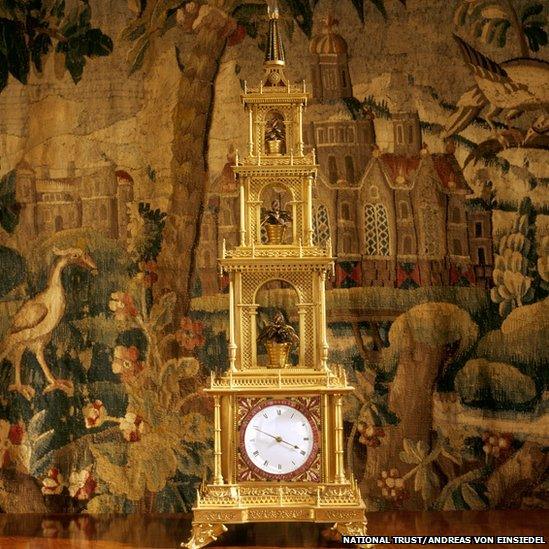
It took almost three years to restore the clock
Three years of "ground-breaking work" has taken place to restore an 18th Century clock to working order, the National Trust said.
The "Pagoda Clock" from Anglesey Abbey near Cambridge was sent away for a six-month refurbishment in 2012.
However, staff at West Dean College in Sussex discovered serious damage to its internal mechanisms and the project ended up taking three years.
The chimes have been digitally recorded to protect the mechanisms from wear.
The clock, which is about a metre (3ft 3ins) tall, gained its name because it is in the shape of a Chinese pagoda.
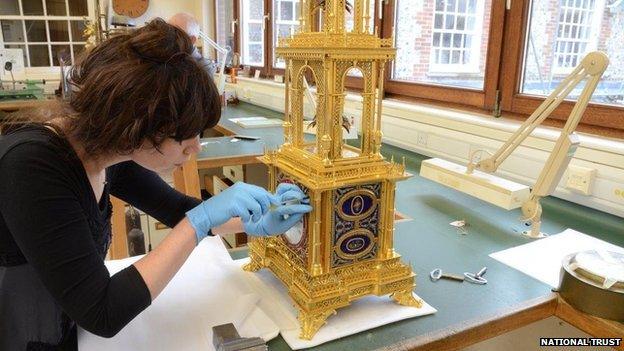
Staff at West Dean College painstakingly cleaned more than 600 parts of the clock
Built in London by James Cox in the early 1770s, it features mechanical plants with petals that open up when the clock chimes midday and 3 o'clock.
It is not known how it came to be in the possession of Lord Fairhaven, who restored Anglesey Abbey in the early to mid-20th Century.
'Heart transplant'
Conservation experts cleaning the 600 individual parts discovered the main spring for the musical chimes was seriously damaged, and could have snapped at any time causing irreparable damage.
To preserve it, an electronic drive and digital recording of the chimes was made.
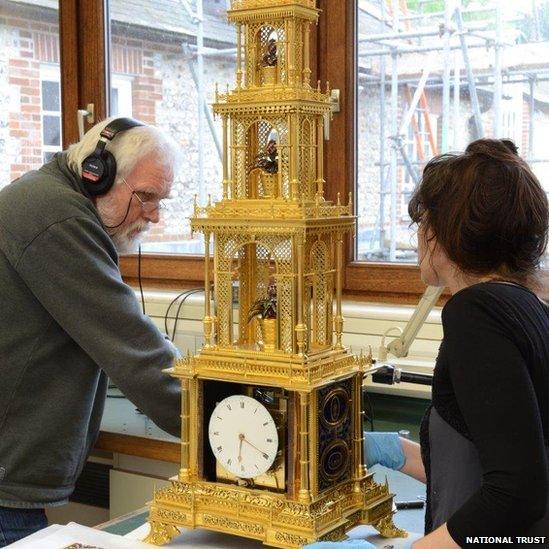
The chimes were digitally recorded to preserve the delicate mechanism
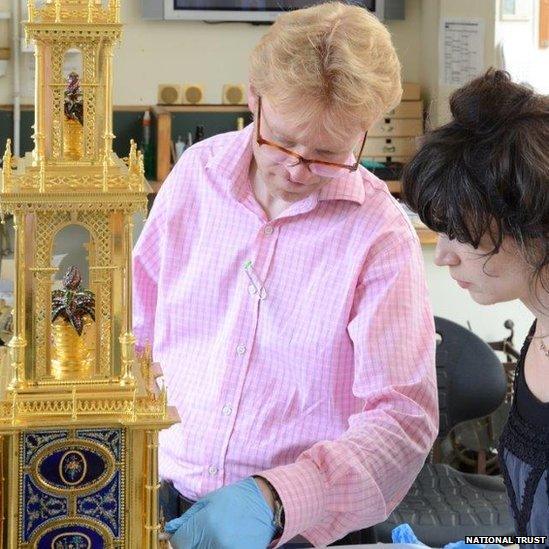
Clock conservator Matthew Read led the project at West Dean College
The process could be fully reversed, Chris Calnan, conservation advisor for the trust said.
"The clock has had a heart transplant to ensure its moving components function safely for their long-term conservation.
"This is ground-breaking work in the field of clock conservation as we believe it to be the first clock to have been conserved in this way," he said.
Although it has been returned to the abbey, experts are continuing to research its history after small pieces of a 19th Century Chinese-print newspaper were found inside it.
They hope these will give an insight into where the clock spent much of its life.
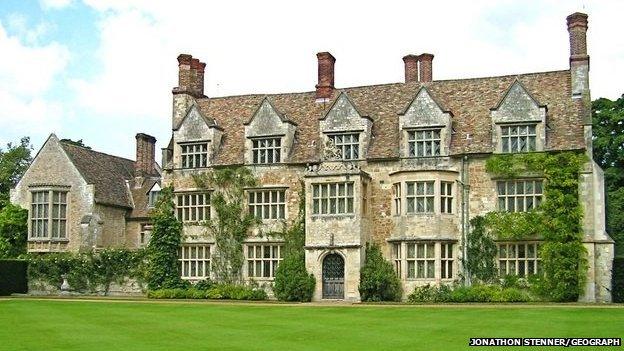
The restored clock is now back on display at Anglesey Abbey after a three-year absence
- Published19 December 2011

- Published22 February 2011